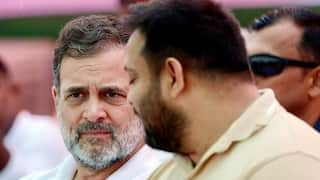Chandrayaan-3 Done, ISRO Sets Eyes On Aditya-L1 Solar Mission. All About It
Aditya-L1 will be India's first space-based mission to study the Sun, and will be placed in a halo orbit around the Lagrange point 1 of the Sun-Earth system.

Aditya-L1: After Chandrayaan-3 successfully soft landed on the Moon's south pole on August 23, 2023, S Somanath, the chairman of the Indian Space Research Organisation (ISRO), said that the Indian space agency's next goal is the Aditya-L1 mission. He said that the Aditya-L1 mission is getting ready at Sriharikota, news agency ANI reported. Aditya-L1 will be India's first space-based mission to study the Sun, and will be placed in a halo orbit around the Lagrange point 1 of the Sun-Earth system.
A Lagrange point is a position in space where a spacecraft or some other object tends to stay in position and is meant to reduce fuel consumption by the spacecraft. The reason why Aditya-L1 chose the L1 point, which lies along the Earth-Sun line, is that this point will allow the spacecraft an uninterrupted view of the Sun. If successfully placed in the halo orbit around L1, Aditya-L1 will be able to continuously view the Sun without any eclipses.
As a result, Aditya-L1 will be able to observe solar activities and their effect on space weather better than what the spacecraft would have analysed from some other point.
L1 is located about 1.5 million kilometres from Earth.
Aditya-L1: Payloads
Aditya-L1 is equipped with seven payloads. These are of two types: remote sensing payloads, and in-situ payloads.
The Visible Emission Line Coronagraph (VELC), Solar Ultraviolet Imaging Telescope (SUIT), Solar Low-Energy X-ray Spectrometer (SoLEXS), and High Energy L1 Orbiting X-ray Spectrometer (HEL1OS) are the four remote sensing payloads, according to ISRO.
The Aditya Solar wind Particle Experiment (ASPEX), Plasma Analyser Package For Aditya (PAPA), and Advanced Tri-axial High Resolution Digital Magnetometers are the three in-situ payloads.
The function of VELC is imaging of the solar corona (outer atmosphere), that of SUIT is to capture images of the photosphere (solar surface) and chromosphere (reddish, glowing layer above the photosphere), that of SoLEXS and HEL1OS to observe the Sun as a star, that of ASPEX is to analyse the solar wind, protons and heavier ions, that of PAPA is to analyse electrons in the solar wind, and that of the magnetometers is to study the magnetic field.
Aditya-L1: Objectives
Aditya-L1's objectives are to study the dynamics of the upper solar atmosphere, observe the plasma environment around the Sun, measure the temperature, velocity and density of different regions on the corona, identify the sequences of solar activities, study the drivers for space weather, study the heating of the corona and chromosphere, the initiation of coronal mass ejections and flares, understand the physics of solar corona and its heating mechanism, study the development of coronal mass ejections, and conduct magnetic field measurements in the solar corona, among other functions.
Aditya-L1: Launch date
Aditya-L1 has a planned mission duration of five years. The solar mission is expected to be launched by the end of August, or early September this year.
Related Video
Southern Rising Summit 2024: How Important is Self-Awareness? Insights from Anu Aacharya | ABP LIVE






































